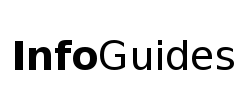
 | University Libraries
| University Libraries
Creators today don't have to do anything to get a copyright; a work that qualifies is automatically fully protected by copyright from the moment it is first "fixed" (meaning, saved in some format, like a drawing on a chalkboard or whiteboard, or a file saved in a computer's memory). Publication is not a requirement for copyright protection, and even formal registration is purely optional. There is also no requirement to include a copyright notice, date, the "circled c" © symbol, or any other information on the work in order to own a copyright.
Copyright protects original creative expression. Including:
Copyright does not apply to: U.S. Copyright Code, 17 U.S.C. § 102(b)
The public domain is the collection of all expressive works for which no one owns the copyright.
Typically, work enters the public domain in one of two ways:
(1) The Copyright term ends
In the U.S., works first published or registered before 1929 are in the public domain. For works published in other countries or published after 1929, the Cornell's Copyright Term and the Public Domain the United States can help you figure out copyright status details.
Important: the date mentioned above - 1929 - changes once the new year starts. For example, let's say today's date is September 4, 2025. Works first published or registered in the US, before 1929, are in the public domain Once it is January 1, 2026, works first published or registered in the US, before 1930, will then be in the public domain.
(2) Copyright never existed
Works created by the U.S. federal government (and federal employees in the course of their work) are in the public domain in the U.S. from the moment of their creation - there is no copyright, in the U.S., in U.S. federal government works.
Ask a Librarian | Hours & Directions | Mason Libraries Home
Copyright © George Mason University